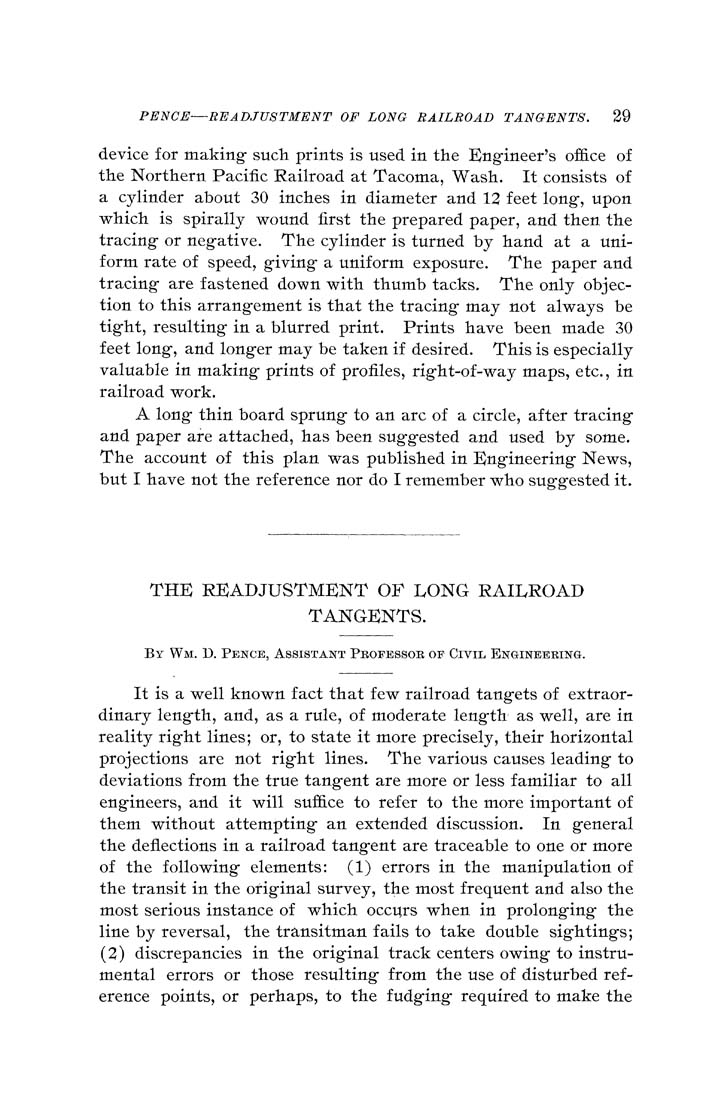PENCE—READJUSTMENT OF LONG RAILROAD TANGENTS. 29
device for making such prints is used in the Engineer's office of
the Northern Pacific Railroad at Tacoma, Wash. It consists of
a cylinder about 30 inches in diameter and 12 feet long, upon
which is spirally wound first the prepared paper, and then the
tracing or negative. The cylinder is turned by hand at a uni¬
form rate of speed, giving a uniform exposure. The paper and
tracing are fastened down with thumb tacks. The only objec¬
tion to this arrangement is that the tracing may not always be
tight, resulting in a blurred print. Prints have been made 30
feet long, and longer may be taken if desired. This is especially
valuable in making prints of profiles, right-of-way maps, etc., in
railroad work.
A long thin board sprung to an arc of a circle, after tracing
and paper are attached, has been suggested and used by some.
The account of this plan was published in Engineering News,
but I have not the reference nor do I remember who suggested it.
THE READJUSTMENT OF LONG RAILROAD
TANGENTS.
By Wm. D. Pence, Assistant Pkofessoe of Civil Engineering.
It is a well known fact that few railroad tangets of extraor¬
dinary length, and, as a rule, of moderate length as well, are in
reality right lines; or, to state it more precisely, their horizontal
projections are not right lines. The various causes leading to
deviations from the true tangent are more or less familiar to all
engineers, and it will suffice to refer to the more important of
them without attempting an extended discussion. In general
the deflections in a railroad tangent are traceable to one or more
of the following elements: (1) errors in the manipulation of
the transit in the original survey, the most frequent and also the
most serious instance of which occurs when in prolonging the
line by reversal, the transitman fails to take double sightings;
(2) discrepancies in the original track centers owing to instru¬
mental errors or those resulting from the use of disturbed ref¬
erence points, or perhaps, to the fudging required to make the
|








